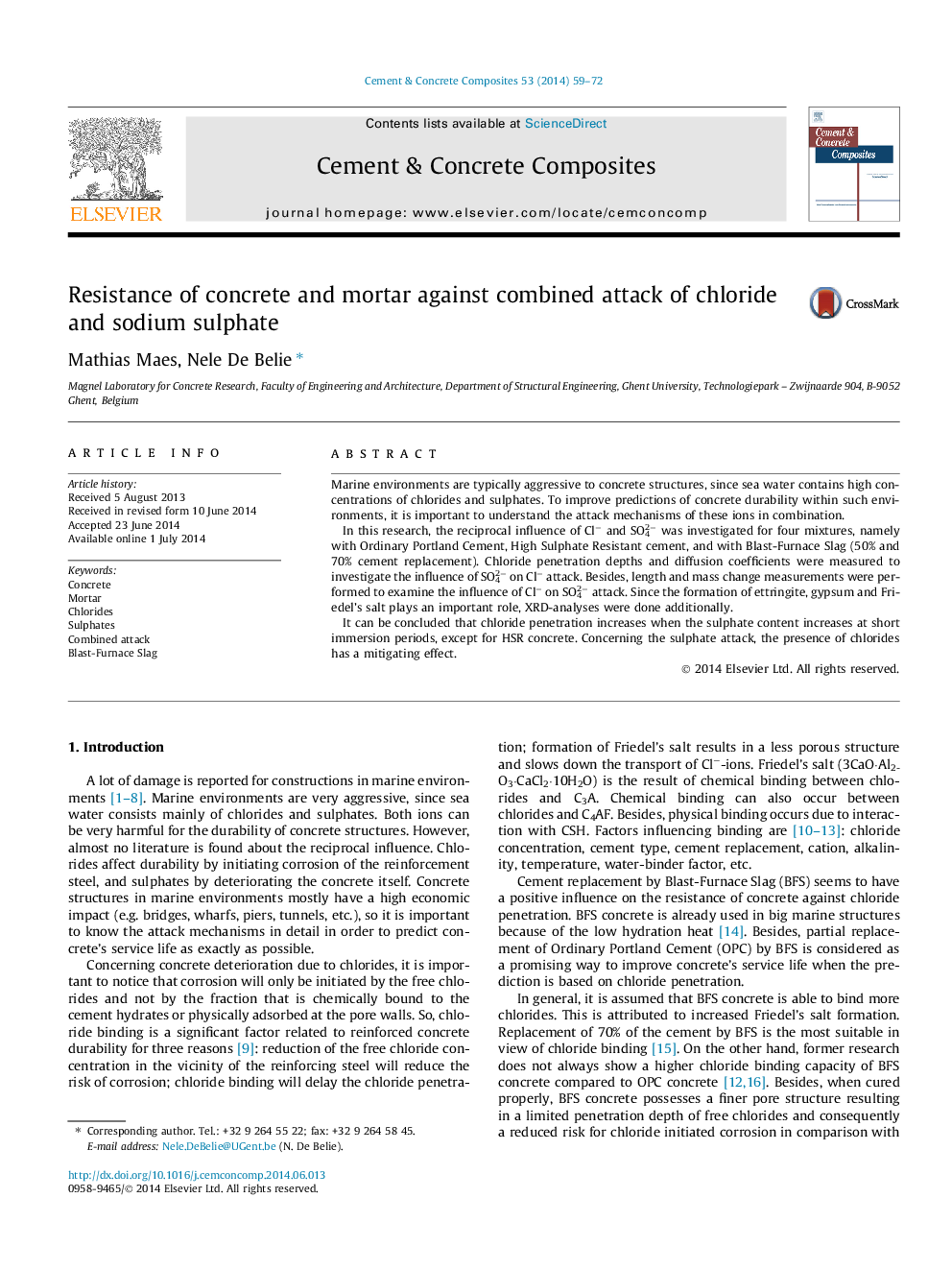| Article ID | Journal | Published Year | Pages | File Type |
|---|---|---|---|---|
| 1454543 | Cement and Concrete Composites | 2014 | 14 Pages |
Marine environments are typically aggressive to concrete structures, since sea water contains high concentrations of chlorides and sulphates. To improve predictions of concrete durability within such environments, it is important to understand the attack mechanisms of these ions in combination.In this research, the reciprocal influence of Cl− and SO42− was investigated for four mixtures, namely with Ordinary Portland Cement, High Sulphate Resistant cement, and with Blast-Furnace Slag (50% and 70% cement replacement). Chloride penetration depths and diffusion coefficients were measured to investigate the influence of SO42− on Cl− attack. Besides, length and mass change measurements were performed to examine the influence of Cl− on SO42− attack. Since the formation of ettringite, gypsum and Friedel’s salt plays an important role, XRD-analyses were done additionally.It can be concluded that chloride penetration increases when the sulphate content increases at short immersion periods, except for HSR concrete. Concerning the sulphate attack, the presence of chlorides has a mitigating effect.
